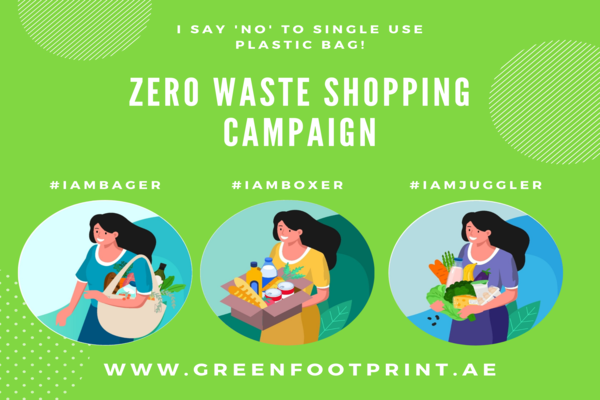Protecting the Credibility of Sustainability-Linked Loans
Banking/Mortgage

March 10, 2020, 11:51 am
By Michael Wilkins, Managing Director and Head of Sustainable Finance, Corporate & Infrastructure Ratings, at S&P Global Ratings.
The benefits of an awareness of environmental, social, and governance (ESG) risks and opportunities – and the potential financial implications of ignoring them – has driven a proliferation of sustainability-linked debt instruments in recent years, whereby entities tie interest margins to ESG performance.
While the market has expressed concerns surrounding transparency, disclosure and standardisation, we believe that, with ambitious sustainability objectives, independent verification and enhanced disclosure practices, sustainability-linked loans could become a mainstream practice in the debt capital markets.
A financial concern
ESG issues and the underlying risks and opportunities are attracting more attention in the financial markets than ever before. And as factors such as climate change, tightening environmental regulations and growing global demand for sustainability intensify, it is clear that ESG is no longer a “nice-to-have” for issuers and investors. Indeed, at S&P Global Ratings, we have already seen that companies focusing on ESG issues have achieved reduced costs, improved working productivity, mitigated risk potential, and created revenue-generating opportunities.
As businesses realise the material financial impact of ESG risks and opportunities and the number of investors looking to incentivise widespread sustainability increases, there is appetite for new ways to embed ESG into operations and decision-making. For this reason, among others, sustainability-linked loans have been taking off.
What is a sustainability-linked loan?
Generally speaking, borrowers set their own sustainability performance targets (SPTs), and using a margin ratchet, align the interest rate on a loan (or contingent facilities) with their performance on meeting these targets. If they underperform, the interest rate rises; if they meet or exceed their SPTs, it decreases.
Because a sustainability-linked loan is linked to the borrower’s overall sustainability profile, proceeds can be used for general corporate purposes, rather than being limited to a specific environmentally beneficial project, as is the case with green-labelled bonds or loans. Moreover, the types of loan facilities that can be linked to sustainability objectives are much broader, including letters of credit, capital lines, and revolving credit facilities. In this way, they offer more flexibility than their more-established green counterpart and are therefore attractive to a wider pool of issuers and investors.
Dramatic growth
Since the first issuance in 2017, the sustainability-linked loan market has been rapidly growing and is already catching up to the more mature green loan market. Indeed, in 2019, the sustainability-linked loan market saw 168% growth to US$122 billion, making it the fastest growing section of the responsible debt market.
And with players from more sectors and regions beginning to link their sustainability efforts to loan pricing, this relatively nascent financing vehicle is only continuing to flourish. In July 2019, Spain’s fourth-largest telecoms operator, Másmóvil, issued the first leveraged loan package in Europe to include an ESG component. The interest rates on a €100 million revolving credit facility (RCF) and €150 million capital expenditure (capex) line are tied to the company’s ESG performance.
Although Europe leads in issuance, we have seen the Middle East is also developing an appetite for sustainability-linked debt. For example, in January 2020, Etihad Airways signed a €100 million loan linked to the UN’s Sustainable Development Goals (SDGs) to support the expansion of a sustainable apartment complex for the airline’s cabin crew.
Protecting the label
Despite this rapid growth and engagement, a lack of industry-wide standards for setting, measuring and reporting on SPTs creates the opportunity for misreporting that could undermine the sustainability-linked label. As a result, the market has expressed concerns regarding the risk of “ESG-washing”; that is, the sustainability-linked loan equivalent of “greenwashing”.
However, robust disclosure and transparency practices could lessen many of these risks. The Sustainability Linked Loan Principles (SLLPs) aim to improve disclosure practices in the sustainability-linked loan market. As best practice, the SLLPs recommend independent, third-party verification of ESG performance to help ensure that not only are SPTs met, but also that the SPTs themselves are sufficiently ambitious to be credible and help achieve long-term sustainability.
As such, we believe that widespread adherence to the guidelines put forward by the SLLPs will go some way to ensuring that the value of the sustainability-linked label is safeguarded. This is something which is especially important when the achievement of SPTs can translate into material financial savings.
Másmóvil’s loan, for instance, uses its S&P Global Ratings’ ESG Evaluation score as an initial referencing benchmark. The score comprises an assessment of the company’s current ESG “Profile” relative to its sector and region, as well its long-term “Preparedness” to anticipate strategic and emerging risks and opportunities in the longer-term.
If the score deteriorates, the interest rate will rise by 15 basis points; if it improves, the interest rate will decrease by 15 basis points. With pricing advantages linked to an independent, third-party benchmark, Másmóvil’s ESG-linked loan package demonstrates how strong transparency can support the credibility of the sustainability-linked loan label and underpin the further growth of the market.










